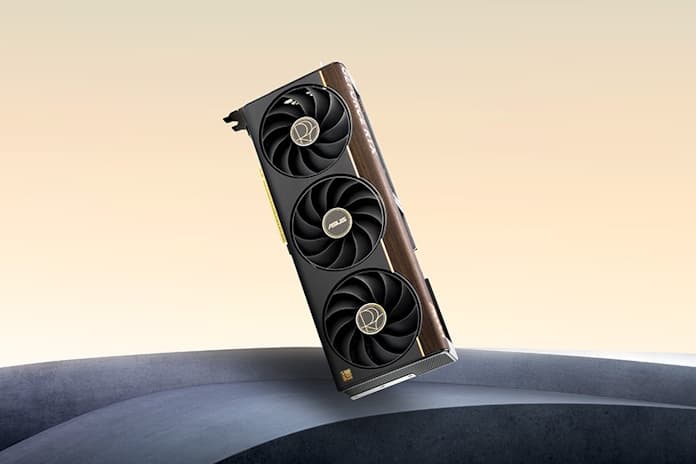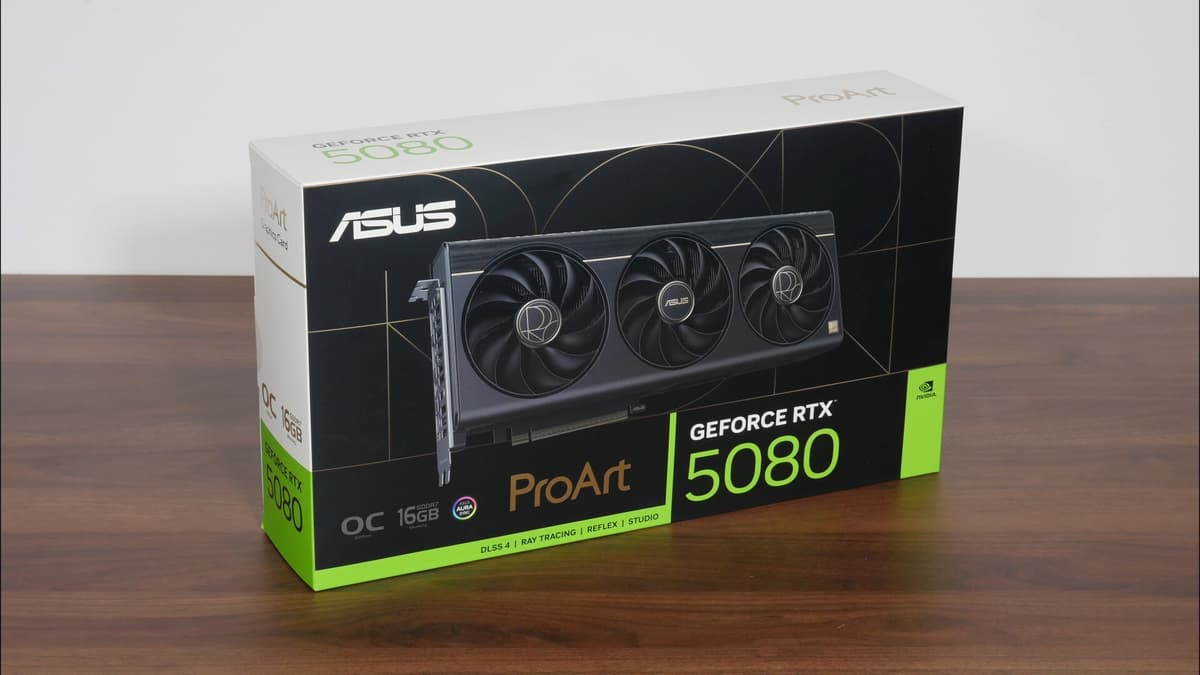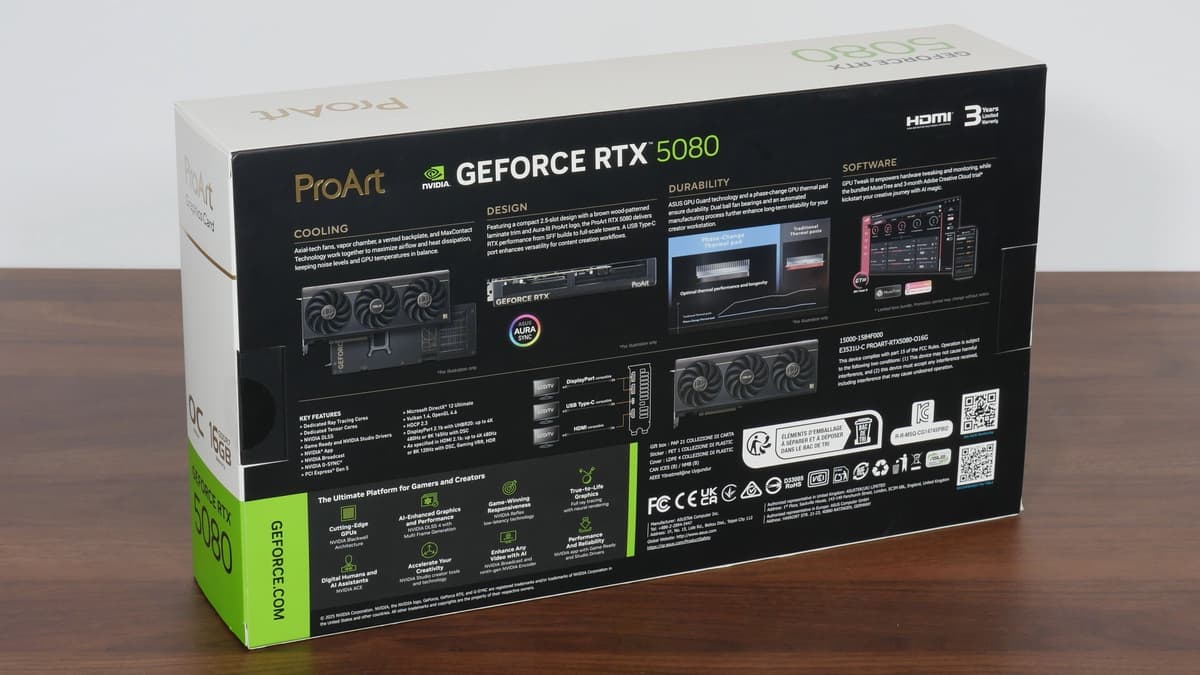
Real talk: after assembling countless rigs drenched in RGB and hard-edged plastic—each one louder and flashier than the last—I found myself craving something different. I wanted uncompromising GPU muscle that wouldn’t turn my studio into a midnight disco. Enter the Asus ProArt RTX 5080, the first card to make me pause mid-build and admire its subtle white glow, tasteful wood-effect accent, and zero neon vomit. It’s both a statement piece and a powerhouse.
In today’s GPU market, three pillars determine a card’s appeal: raw performance, thermal control, and design. Many high-end GPUs hit spectacular benchmark scores but leave you elbowing your roommate to hear yourself think. Others look stunning yet throttle under sustained loads. The Asus ProArt RTX 5080 promises to nail all three. This article offers your first look at its design philosophy, acoustic behavior, cooling solution, and where it could slot into your next build. Keep in mind that final benchmarks and exact pricing are pending—what follows is based on preliminary specs and hands-on impressions.
| Model | Asus ProArt RTX 5080 |
|---|---|
| CUDA Cores | 10,752 |
| VRAM | 16 GB GDDR7 |
| Slot Size | 2.5-slot (Nvidia SFF Ready) |
| Outputs | 3× DisplayPort, 1× HDMI, 1× USB-C |
| Cooling | Triple-fan, MaxContact vapor chamber |
| Lighting | White ProArt logo, no RGB |
| Design | Minimalist with wood-effect trim |
| MSRP / Release | To Be Announced |
At first glance, the ProArt RTX 5080 doesn’t scream “gamer.” Its matte-white shroud, milled-aluminum fans, and Scandinavian-inspired wood accent whisper refinement rather than shout. A single white LED halo around the ProArt logo provides status feedback without turning your desk into a rainbow rave. The restrained styling integrates seamlessly into professional workspaces—photo studios, editing bays, or clean desktop environments—while signaling that performance was never an afterthought.
Even the packaging reinforces this philosophy. Inside a minimalistic white box, the GPU rests in custom foam cutouts, accompanied by a simple Quick Start guide and a single power adapter cable. No extraneous stickers or zip ties—just the essentials to get you up and running.
Beyond its sleek exterior lies a serious thermal solution: a full-coverage heatsink paired with a MaxContact vapor chamber and three precision-tuned fans. Instead of individual heat pipes, the vapor chamber flattens die irregularities, maximizing contact and uniform heat spread. Key takeaways so far:
We’ll publish detailed acoustic charts—including idle, medium, and full-load dBA readings at 30 cm and 1 m—once our calibrated microphones capture real data. Early listening tests in a quiet, sound-treated bench reveal nothing more than a gentle breeze even under multi-hour 4K exports.

As an Nvidia-certified SFF Ready card, the ProArt RTX 5080’s 2.5-slot profile is ideal for mini-ITX and micro-ATX cases like the DAN Case A4, NCASE M1, or Cooler Master NR200. To get the most from your build:
In one micro-ITX trial, swapping in the ProArt card knocked a few degrees off peak core temperatures versus my previous GPU—no exotic mods required.
True benchmarks are still on the horizon, but Nvidia’s recent generational leaps suggest a solid uplift over the RTX 4080. Here’s what to anticipate:
Whether this card can hold peak boost clocks during marathon stress tests remains to be seen; we’ll confirm as soon as full review samples arrive.

Editing 4K footage, stacking adjustment layers, and color grading in Premiere Pro or DaVinci Resolve hinge on VRAM bandwidth and shader throughput. Sixteen gigabytes of GDDR7 should make playback smoother and exports faster, even under heavy effect loads.
Blender, Maya, and Cinema 4D users will appreciate consistent viewport performance and hardware-accelerated AI denoising. Faster scene previews and look-dev iterations help reduce trial-and-error friction.
Silent GPU fans keep background noise off your stream, while the USB-C port can power a high-res display or VR headset with a single cable—streamlining desk setup.
For developers running containerized ML workloads or multiple VMs, thermal consistency under extended stress will be vital. The ProArt’s cooling design aims to deliver that stability.

Compared to Nvidia’s Founders Edition, the ProArt RTX 5080 forgoes aggressive fin geometry and RGB for clean lines and a soft white glow. Against Asus ROG Strix or other OC models, it trades marginal factory-overclock headroom for quieter fans and a mature visual identity. If you crave every last MHz and don’t mind fan noise, an ROG Strix variant might suit you. But for those who value consistency, acoustics, and a refined design, the ProArt strikes a balanced professional tone.
Asus hasn’t confirmed pricing or release dates, but past ProArt cards have generally sat $50–$100 above reference MSRP. That premium typically buys quieter operation, longer-life components, and a design that elevates your workspace. Bookmark this page for our full benchmarks—thermal charts, acoustic data, and real-world gaming tests—as soon as production units land in our lab.
If you’re on a tight budget or chasing peak synthetic scores, a reference or value-focused board may be a better fit. But if you want a blend of style, silence, and sustained performance, the Asus ProArt RTX 5080 stands out as a compelling choice.
We’ll evaluate the ProArt RTX 5080 side-by-side with Nvidia’s Founders Edition and Asus ROG Strix RTX 5080 using a test bench featuring an Intel Core i9-13900K, 32 GB DDR5-6000 memory, and a high-end 12VHPWR-ready power supply. Standardized tests will include 3DMark, Blender render times, DaVinci Resolve exports, and AAA titles at 4K with ray tracing and DLSS, alongside calibrated noise measurements at 30 cm and 1 m. Thermal probes on the die and VRM zones will chart stability during extended workloads. Stay tuned for full data and analysis.
Get access to exclusive strategies, hidden tips, and pro-level insights that we don't share publicly.
Ultimate Tech Strategy Guide + Weekly Pro Tips